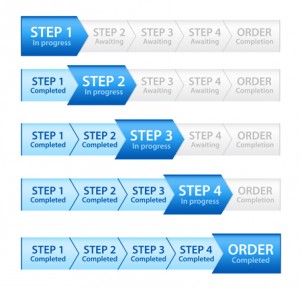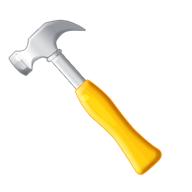1 min read
A Simple Solution to the FDA’s UDI Requirement
New FDA regulations regarding UDI (Unique Device Identification) are causing worry among medical device manufacturers. We show how you can fulfill...

 I had a neighbor once with a hole in her roof. It wasn’t a big hole, but water dripped into her wall during a bad rain. My neighbor didn’t fix the hole; instead she kept a bucket of paint and covered the water stain every few months. “It’s easier to paint than get on the roof,” she once told me.
I had a neighbor once with a hole in her roof. It wasn’t a big hole, but water dripped into her wall during a bad rain. My neighbor didn’t fix the hole; instead she kept a bucket of paint and covered the water stain every few months. “It’s easier to paint than get on the roof,” she once told me.
Many times, symptoms are easier to identify than the actual issue causing the problem.
When all is not going well on the shop floor – failed audits, quality control issues, slow orders, missing parts, confusion – it’s not always easy to pinpoint the cause. Every single one of these issues impacts the schedule, which quickly becomes the culprit. No matter the underlying issue, a missed deadline demands attention. So, some cling to scheduling as the problem to fix, never discovering the real problem.
It’s slapping another coat of paint on the water-damaged wall.
Many customers look for dynamic scheduling solutions because they see a shop floor symptom (missed deadlines) and dynamic scheduling offers an easy solution (like a bucket of paint). Truth is, a simple coat of paint isn’t going to solve much, and will never make much impact on your business.
We’re going to encourage you to look a little deeper.
Think about your personal schedule. In the past 20 years, we’ve moved through a progression of devices – personal planners to smart devices. No matter how diligent you are, or how robust the tool, scheduling isn’t going to increase the quality of your work. Scheduling can only have minimal impact on efficiency; it simply selects the work to be done and places it in an open timeslot, then maybe offers innovative widgets to get you to do the work. I admit, dynamic scheduling can synchronize the schedule of your shop floor, but that’s when the work of the tool is complete. It’s not going to help your team achieve its goals. Work quality isn’t going to magically improve.
 To be honest, the benefits of scheduling on the manufacturing shop floor are limited. Work can only move forward once each previous operation is completed, no matter the “schedule” you create. An error or non-conformance isn’t going to solve itself because you know the “right” time to do the work. Tighter scheduling is not going to correct the underlying problems hindering throughput.
To be honest, the benefits of scheduling on the manufacturing shop floor are limited. Work can only move forward once each previous operation is completed, no matter the “schedule” you create. An error or non-conformance isn’t going to solve itself because you know the “right” time to do the work. Tighter scheduling is not going to correct the underlying problems hindering throughput.
Dynamic scheduling offers short term answers to shop floor problems. Many companies solve problems by throwing more manpower at production, or eke out a little more production from a machine or two, but these are short-term solutions. Tomorrow the same problem may come back. Scheduling is a critical component for a shop floor, however, if the planning and workflows aren’t optimized, no amount of money (on a scheduling tool, overtime or additional operators) will solve the real problem.
It would be like spending money on buckets of paint and repair projects, while the hole in the roof waited for the next rainstorm.
MES and paperless manufacturing offer a broad range of tools and solutions for the shop floor. No other product benefits the shop floor in so many ways, directly addressing the root cause of problems hindering production. Many manufacturers find a solution to the original shop floor problem through the paperless system, and then discover other benefits they may not have known were there.
Talk to an engineer about shop floor issues, and work on the root problems causing the issues. Expand the conversation beyond simply the schedule, and look at what is really causing the production delays. We recommend an engineer be involved in the sales process from the very beginning, to identify issues before determining or selecting a solution. Your shop floor team can provide both insight and focus on operations.
Many times, the solution to the problem is much simpler (and less expensive) than the solution to the symptom. Once you’ve looked a little deeper at the real problem, the final solution will often deliver a wealth of other benefits.

1 min read
New FDA regulations regarding UDI (Unique Device Identification) are causing worry among medical device manufacturers. We show how you can fulfill...

1 min read
With 4 simple tips, you can learn a lot about a manufacturing software solution before you ever sign a contract. By Kristin McLane, President of CIMx...

1 min read
Most manufacturers know quality and efficiency would suffer if they asked their shop floor to use the wrong tool, but all too often that’s what...